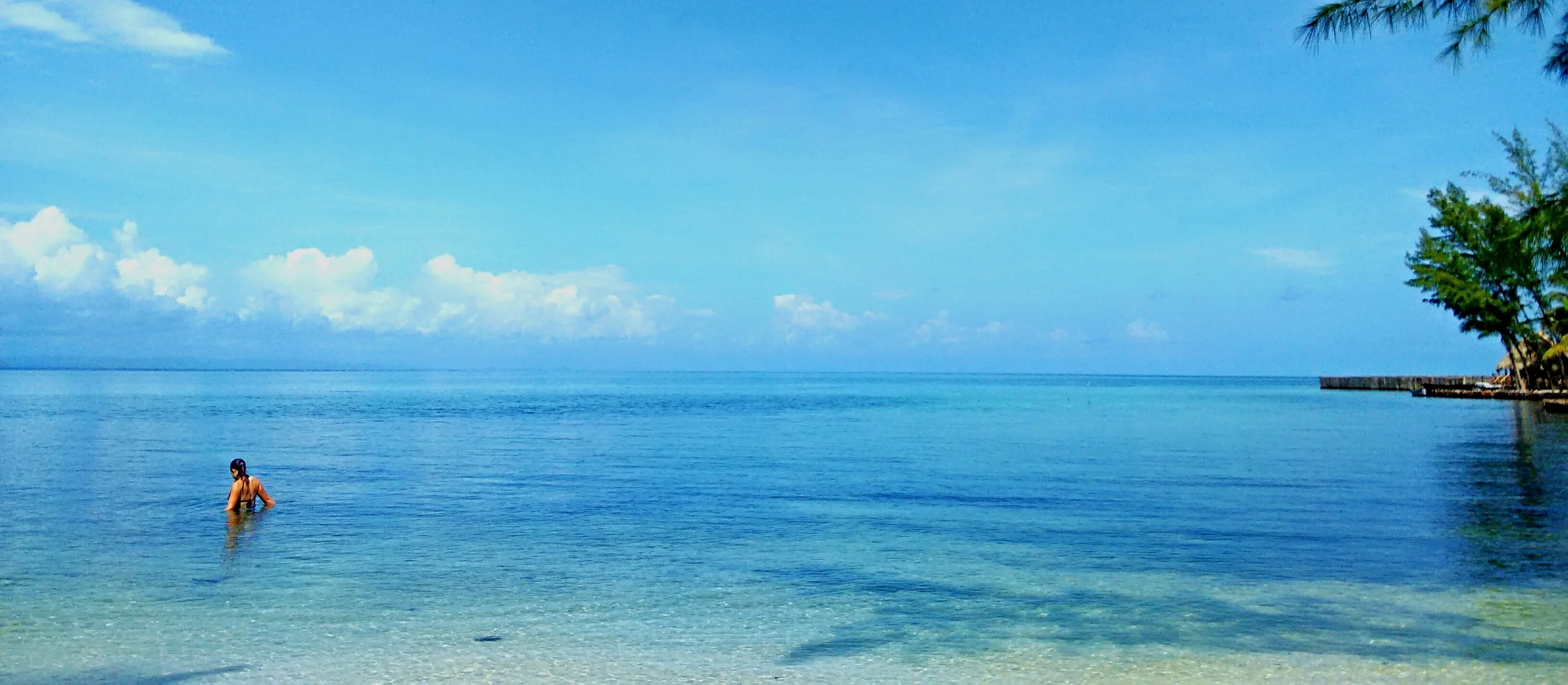Love is in the Air in Belize for Blue Morpho Butterflies and Bioluminescent Click Beetles
/Love is in the air right now here in Belize, with the height of the dry season being the favorite time of year for some spectacular species of beetles and butterflies to strut their stuff and find a mate. This also makes it one of our favorite times of year as blue morpho butterflies spark the forest with electric blue flashes by day and brilliant green-glowing bioluminescent click beetles light up the trees by night. Both of these insects are truly magnificent to behold and their sheer abundance at this time of year infuses the jungle with a sense of wonder that captures the imagination and delights the soul.
As its common name implies, the blue morpho butterfly’s wings are bright blue, edged with black. The blue morpho (Morpho peleidis) is among the largest butterflies in the world, with wings spanning from five to eight inches. Their vivid, iridescent blue coloring is a result of the microscopic scales on the backs of their wings, which reflect light. The underside of the morpho’s wings, on the other hand, is a dull brown color with many eyespots, providing camouflage against predators such as birds and insects when its wings are closed. When the blue morpho flies, the contrasting bright blue and dull brown colors flash, making it look like the morpho is appearing and disappearing, like a shimmering forest fairy. The males’ wings are broader than those of the females and appear to be brighter in color.
Blue morphos live in the tropical forests of Latin America from Mexico to Colombia. Adults spend most of their time on the forest floor and in the lower shrubs and trees of the understory with their wings folded. However, when looking for mates like at this time of year, the blue morpho will fly through all layers of the forest. Pilots flying over rainforests have even encountered large groups of blue morphos above the treetops, warming themselves in the sun. The blue morpho’s entire lifespan lasts only 115 days, which means most of their time is spent eating and reproducing. But during the little time that they have, they fill the rainforest with brilliant beauty that is a pleasure to behold.
The blue morpho’s diet changes throughout each stage of its lifecycle. As a caterpillar, it chews leaves of many varieties, but prefers to dine on plants in the pea family. When it becomes a butterfly it can no longer chew, but drinks its food instead. Adults use a long, protruding mouthpart called a proboscis as a drinking straw to sip the juice of rotting fruit, the fluids of decomposing animals, tree sap, fungi and wet mud. Blue morphos taste fruit with sensors on their legs, and they "taste-smell" the air with their antennae, which serve as a combined tongue and nose. (Source: http://www.rainforest-alliance.org/kids/species-profiles/blue-butterfly)
In Belize, you have the opportunity to view the stunning blue morpho butterfly throughout the country both in the wild and in butterfly enclosures. Our favorite butterfly enclosures are at the Green Hills Butterfly Ranch, which also has an excellent exhibition on butterfly life-cycles and many other butterfly species in their large enclosure, and at the Natural History Center at Chaa Creek, which focusses exclusively on the Blue Morpho.
The bioluminescent click beetles (from the family Pyrophorus, also known as Fire Beetles) however, are much rarer and are mostly observed in areas of mature forest. They begin to glow at dusk and fill the air in great numbers for several hours just after it gets dark. Unlike fire-flies, which typically flash “on” and “off” the click beetles can remain glowing for quite a long time and have the ability to control the intensity of their bioluminescence; for example, they become brighter when touched by a potential predator. They have two luminescent spots at the posterior corners of the pronotum, or their “back”, which are commonly mistaken for eyes. But the bright light we see when they fly through the forest is actually coming from a large ventral spot that lights up their entire abdomen. Bioluminescent click beetles are found throughout tropical and subtropical America, as well as in Texas and Florida. Adult Pyrophorus beetles feed on pollen and sometimes small insects while their larvae feed on various plant materials and invertebrates, including the larvae of other beetles. Eggs and Larvae are luminous as well and in the Brazil, the larvae of the species Pyrophorus nyctophanus, which live in tunnels in the outer layers of termite nests glow at night to attract prey in the form of other insects. (Source: https://en.wikipedia.org/wiki/Pyrophorus_(beetle))
The Blue Morpho and bioluminescent click beetles are icons of the Belize rainforest – seeing them on a regular basis here is just another reminder about just how special Belize’s jungles are and how much beauty they sustain. Thousands of other natural wonders are waiting for you here in Belize…but don’t take our word for it – come and see for yourself!






